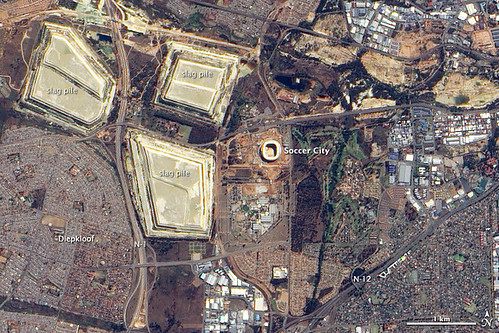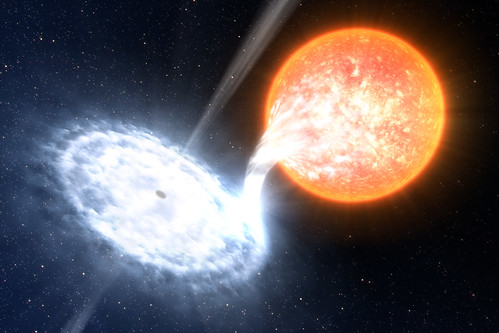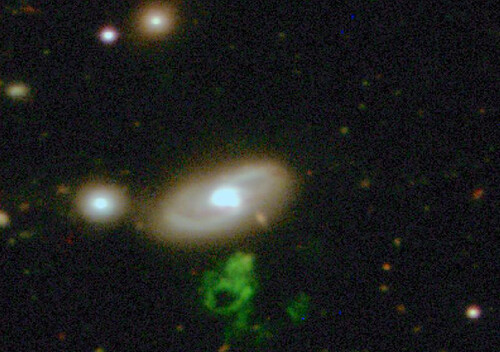Awesomeness Round-up – 7/5/10
- By Sara Mitchell
- July 5, 2010
- 1 Comment

Soccer City Stadium, Johannesburg, South Africa (uploaded by NASA Goddard Photo and Video)
Cue the vuvuzelas – NASA Goes to the World Cup! See the games from a new perspective with a slideshow of images from Earth-observing satellites of the event sites and participating countries.
Looking in the opposite direction – deep into the cosmos – we’re excited to hear that SOFIA’s flying telescope is seeing early success. Listen to an NPR story about the trying times faced by the mission during its development, and what makes this a unique NASA endeavor.

Two weeks ago, we kicked off our round-up with a stunning video of the high-speed entry of the Hayabusa spacecraft, captured from a DC-8. But what we didn’t know about at the time was the role played by a group of high school students from Massachusetts. What a thrilling surprise!

Credit: ESO/L. Calçada
Launched 15 years ago, NASA’s Rossi X-ray Timing Explorer (RXTE) satellite has been crucial to studying the jets of gas ejected from black holes paired in a binary system with a normal star. RXTE discovered the binary system XTE J1550-564 in 1998 and closely monitored its X-ray emissions during an outburst in 2000. Now, scientists have used that data to assemble a detailed timeline of what happened within the system during the period, providing new insight into black hole jets.
WE WANT YOU – to be citizen scientists! Science offers increasing opportunities for people to participate without any specialized background or training. Scientists rely on non-scientists to help them make observations and sift through data. It’s not just tedious work, either – you can hunt for meteorites, search for space dust, or suggest where HiRISE should snap its next images. Wired Science shares NASA Needs You: 6 Ways to Help an Astronomer.

Image Credit: Sloan Digital Sky Survey
Need a success story to get you started doing citizen science? Check out the saga of Hanny van Arkel’s mysterious discovery – which happens to feature one of our favorite new words, voorwerp (it’s Dutch for “object”). Using the data and tools at GalaxyZoo, Hanny found some weird greenish-blue stuff and asked astronomers to take a closer look at it. For the past two years, scientists have been trying to solve the mystery, and they’ve finally got some theories. Hanny coined a new scientific term and got her taste of scientific stardom – and even a congratulations from rockstar astrophysicist Brian May. We’re jealous, Hanny.
What do scientists look like? As evidenced by the citizen participation above, they aren’t always what you’d expect! But we were especially intrigued by this project from Fermilab: Who’s the Scientist?
We love the intersection of music and science (listen to our podcast about the “Cosmic Reflection” symphony) – and this past week saw the UK premiere of “Icarus at the Edge of Time” by physicist Brian Greene and composer Philip Glass. This write-up in the UK’s Guardian puts the piece in perspective among other astronomy-themed compostions.



[…] blog does a weekly roundup of the best bits of space in the news. This week’s offerings are here and include a bit on the probe Hayabusa’s return from an asteroid sample return mission. In […]